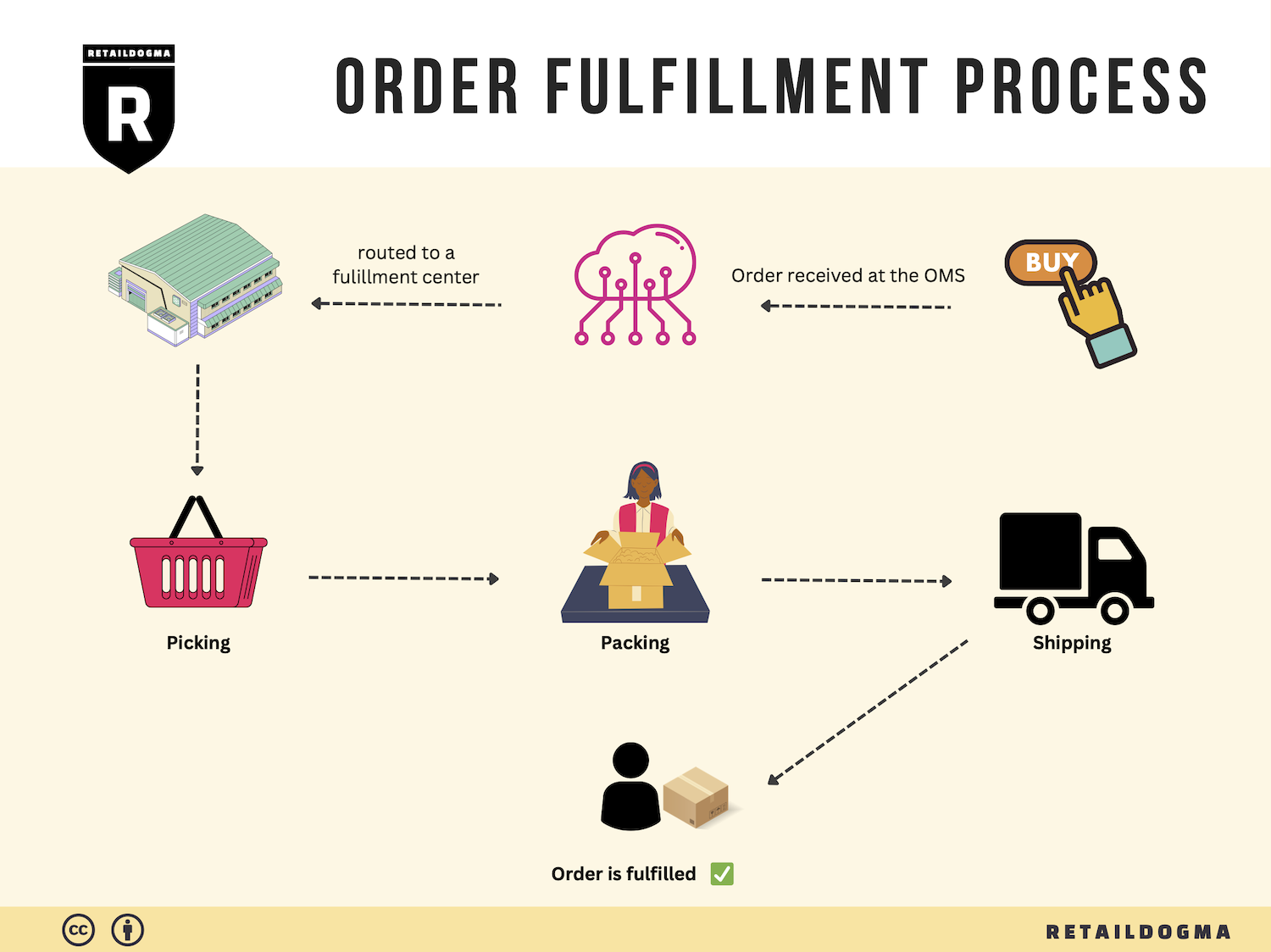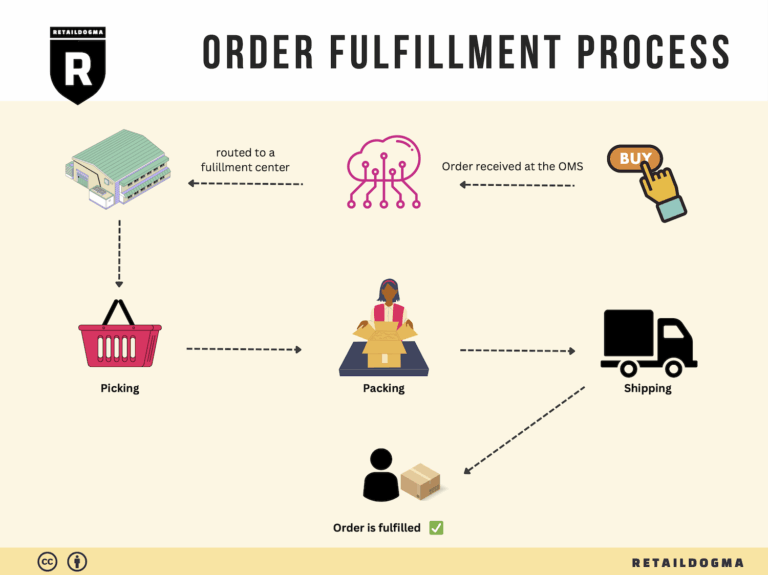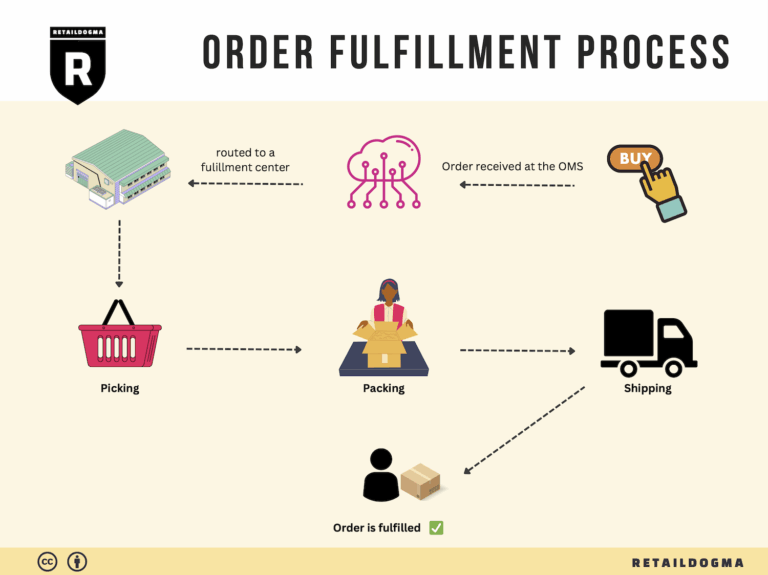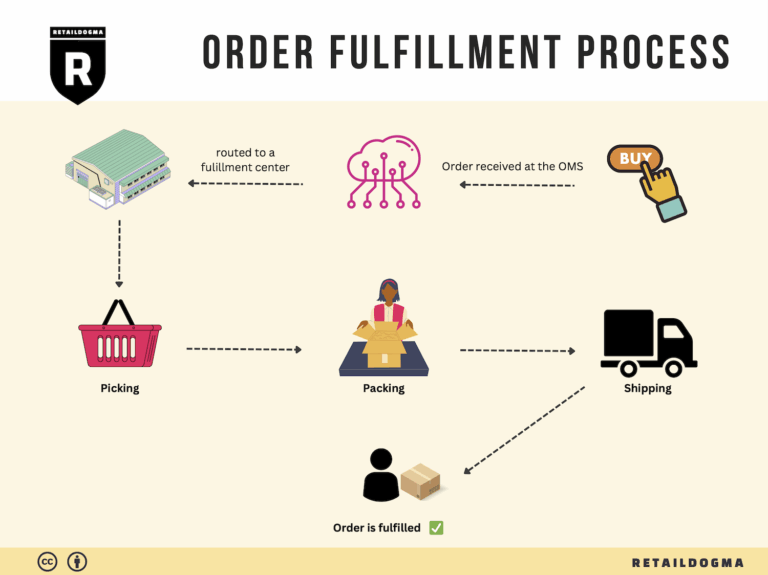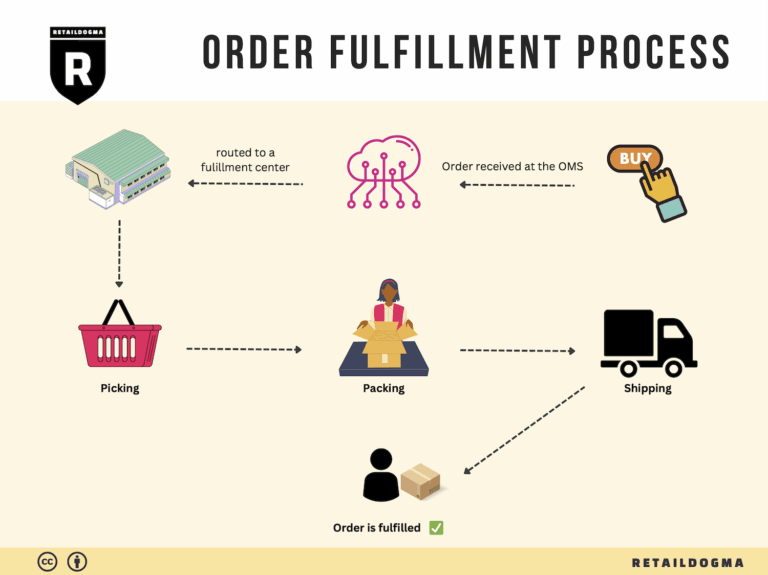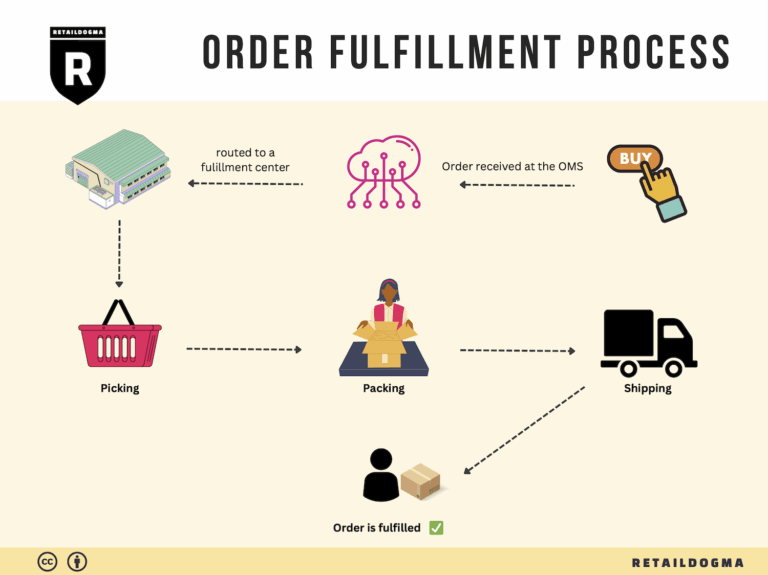Ecommerce Fulfillment Services: The Ultimate Guide (2025)
What is E-commerce Fulfillment? An Introduction for Growing Businesses
Understanding the Fulfillment Challenge
As your online business grows, the excitement of increased sales can quickly turn into a headache when it comes to packing and shipping orders. Many entrepreneurs find themselves overwhelmed by the complexities of order fulfillment, which is fundamentally the process of getting a product from your inventory into the hands of a customer. This involves not just shipping, but also inventory management, packing, and customer service. For many growing businesses, these tasks can consume valuable time and resources that could be better spent on scaling operations and enhancing customer engagement.
What This Guide Covers
In this guide, we will demystify the world of e-commerce fulfillment by exploring various fulfillment models such as Third-Party Logistics (3PL) and Fulfillment by Amazon (FBA). We will delve into the core services that fulfillment partners typically offer, including warehousing, order processing, shipping, and returns management. Understanding these services will help you identify the specific needs of your business and how a fulfillment partner can meet those needs.
We will also provide practical advice on how to choose the right fulfillment partner. Factors such as location, scalability, technology integration, and customer service capabilities are crucial in making this decision. Additionally, we will discuss pricing structures associated with different fulfillment models, helping you to understand the costs involved and how they can impact your bottom line.
Empowering Your Business Decisions
The goal of this guide is to empower your business to make informed, strategic decisions about your logistics and fulfillment processes. With the right knowledge and tools, you can streamline your operations, enhance customer satisfaction, and ultimately drive growth. By leveraging effective fulfillment strategies, you can focus on what you do best—growing your business and delighting your customers.
Let’s dive into the world of e-commerce fulfillment and explore how you can transform your logistics into a competitive advantage.
What You’ll Learn In This Guide
- What is E-commerce Fulfillment? An Introduction for Growing Businesses
- The Order Fulfillment Process: From ‘Buy’ Button to Customer’s Door
- Comparing Fulfillment Models: In-House vs. 3PL vs. Dropshipping
- A Deep Dive into Amazon FBA: Pros, Cons, and Who It’s For
- Core Services Offered by Fulfillment Centers
- How to Choose a Fulfillment Partner: A 6-Point Checklist
- Understanding Fulfillment Pricing: A Breakdown of Common Fees
- Frequently Asked Questions (FAQs) about Fulfillment
- Conclusion: Is Outsourcing Fulfillment the Right Move for Your Business?
- Important Disclaimer
The Order Fulfillment Process: From ‘Buy’ Button to Customer’s Door
1. Receiving Inventory
The first step in the order fulfillment process is receiving inventory. This involves the arrival of products at your warehouse or fulfillment center from suppliers or manufacturers. Upon receiving the shipment, it is crucial to conduct a thorough inspection to ensure that the received items match the purchase order in terms of quantity and quality. This process typically includes checking for any damages and verifying that the correct SKUs (Stock Keeping Units) are present.
Importance: Proper inventory receiving is vital as it sets the foundation for an efficient fulfillment process. Any discrepancies at this stage can lead to stockouts, overstocking, or customer dissatisfaction due to incorrect orders. Efficient inventory management starts here, helping to maintain accurate stock levels and avoid future complications.
Key Term: SKU (Stock Keeping Unit) – A unique identifier for each product that helps in tracking inventory and sales.
2. Warehouse Storage
Once the inventory has been received and verified, the next step is warehouse storage. This involves placing the products in designated areas within the warehouse based on a well-organized inventory management system. Efficient warehouse layout and storage methods, such as bin locations and shelving systems, are essential for easy accessibility and quick retrieval of items.
Importance: Effective storage solutions enhance the overall efficiency of the fulfillment process. Properly organized inventory reduces the time spent locating items during order picking and helps maintain an accurate stock count. Additionally, it minimizes the risk of misplaced items, which can lead to fulfillment errors.
Key Term: Inventory Management System – A software tool used to track inventory levels, orders, sales, and deliveries, ensuring optimal stock levels and organization.
3. Order Picking
Order picking is the process of selecting the correct items from the warehouse to fulfill a customer’s order. This step typically involves generating a pick list that outlines the items needed for each order, along with their respective locations within the warehouse. Warehouse staff will then follow this list to gather the items.
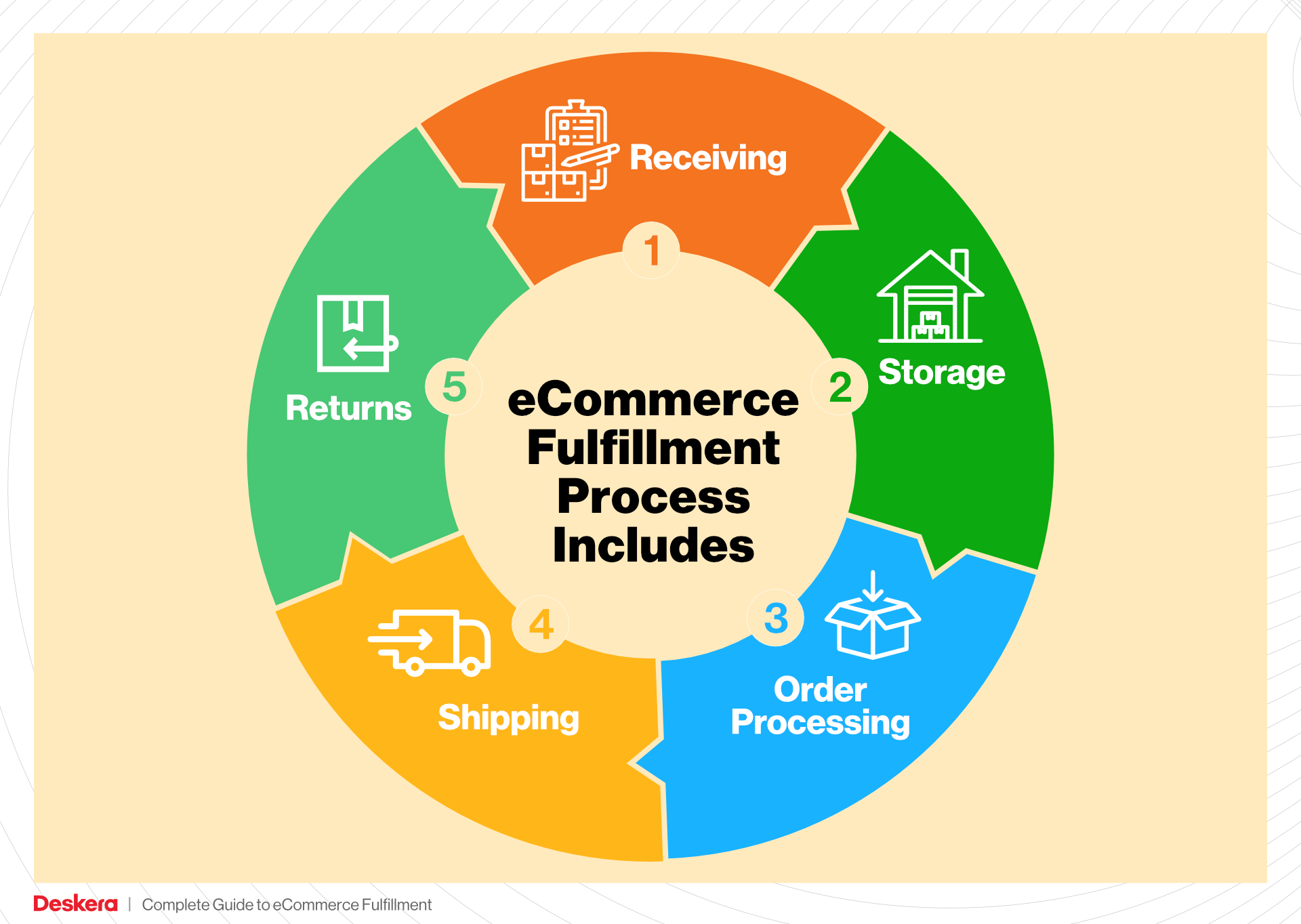
Importance: Accurate order picking is crucial for ensuring that customers receive the correct products in a timely manner. Errors in this stage can lead to incorrect shipments, resulting in returns, exchanges, and ultimately, customer dissatisfaction. Implementing efficient picking strategies, such as batch picking or zone picking, can significantly improve productivity and accuracy.
Key Term: Pick List – A document or digital tool that details the items and quantities needed for fulfilling orders, aiding warehouse staff in efficient order selection.
4. Order Packing
After items have been picked, the next step is order packing. This involves securely packaging the selected items for shipment. Proper packing is essential not only for protecting the products during transit but also for ensuring that all items are included and that the order is correctly labeled.
Importance: Effective packing contributes to customer satisfaction by ensuring that products arrive in excellent condition. It also plays a role in minimizing shipping costs by optimizing package size and weight. Moreover, clear labeling with shipping information helps prevent delays in the delivery process.
Key Term: Packing Slip – A document included in the shipment that lists the items contained in the package, providing transparency for both the seller and the customer.
5. Shipping & Delivery
The final step in the order fulfillment process is shipping and delivery. Once orders are packed, they are handed over to shipping carriers for distribution. This stage includes selecting the appropriate shipping method based on the customer’s location, delivery speed requirements, and cost considerations.
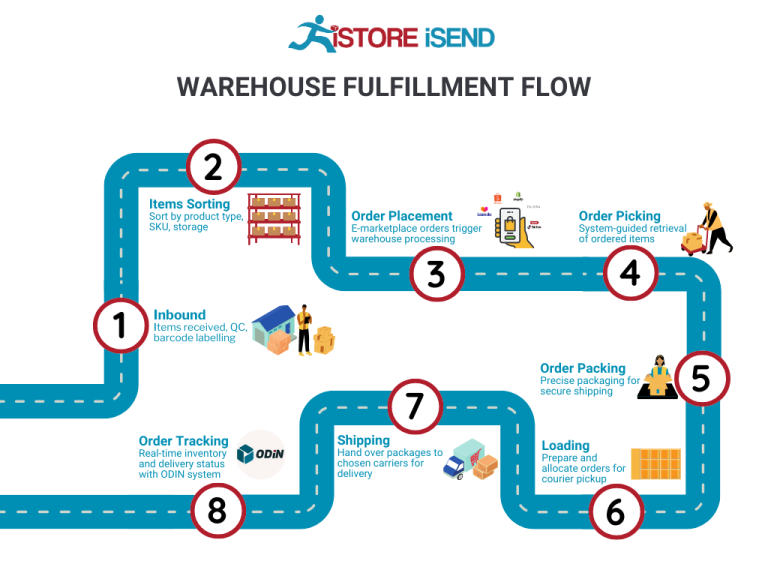
Importance: Timely shipping and delivery are critical for maintaining customer satisfaction and loyalty. Delays in this stage can lead to negative customer experiences and harm your business reputation. Utilizing a reliable logistics partner and offering various shipping options can enhance your fulfillment capabilities and meet customer expectations.
Key Term: Last-Mile Delivery – The final step in the shipping process where the package is delivered from a transportation hub to the final destination, often the most critical and complex part of the logistics chain.
By understanding and optimizing each of these steps in the order fulfillment process, e-commerce businesses can significantly enhance their operational efficiency, improve customer satisfaction, and ultimately scale their operations successfully.
Comparing Fulfillment Models: In-House vs. 3PL vs. Dropshipping
Comparison of Fulfillment Models
| Model | Who Handles Inventory | Best For (Business Stage) | Key Advantage | Key Disadvantage |
|---|---|---|---|---|
| In-House Fulfillment | The business itself | Established businesses | Full control over inventory and operations | High overhead costs and resource demands |
| Third-Party Logistics (3PL) | 3PL provider | Startups to mid-sized businesses | Scalable solutions and expertise in logistics | Less control over inventory and processes |
| Dropshipping | Supplier or manufacturer | Startups and small businesses | Low startup costs and no inventory risk | Lower profit margins and reliance on suppliers |
In-House Fulfillment
In-house fulfillment involves a business managing its own inventory, warehousing, and logistics operations. This model is often favored by established businesses that have the resources and infrastructure to handle order fulfillment internally. The main advantage of in-house fulfillment is the complete control it offers over the entire supply chain. Businesses can oversee every aspect, from inventory management to shipping, ensuring that quality standards are met and that customer service is personalized. Additionally, in-house fulfillment can lead to faster shipping times, as products are stored locally and can be dispatched quickly.
However, this model comes with significant downsides. The overhead costs associated with maintaining a warehouse, hiring staff, and managing logistics can be substantial. Furthermore, as sales volume fluctuates, businesses may face challenges in scaling operations efficiently. This can lead to either excess inventory or insufficient stock during peak times, both of which can harm cash flow and customer satisfaction. Therefore, while in-house fulfillment can provide control and speed, it requires significant investment and operational management.
Third-Party Logistics (3PL)
Third-party logistics (3PL) providers offer a flexible and scalable solution for businesses looking to outsource their fulfillment operations. This model is particularly beneficial for startups and mid-sized businesses that may not have the resources to manage logistics in-house. 3PL providers handle warehousing, inventory management, packaging, and shipping, allowing businesses to focus on core competencies such as marketing and sales.
One of the key advantages of using a 3PL is the scalability it offers. As a business grows, a 3PL can easily adjust services to meet changing demands, whether that means expanding warehouse space or providing additional shipping options. Moreover, 3PL providers often have established relationships with carriers, which can lead to lower shipping costs and improved delivery times. However, the trade-off is that businesses relinquish some control over their inventory and fulfillment processes. This can lead to challenges in communication, potential delays, and issues with inventory accuracy if not managed properly. Thus, while 3PL can provide significant operational benefits, businesses must ensure they partner with reliable providers to mitigate risks.
Dropshipping
Dropshipping is a fulfillment model where businesses sell products that are shipped directly from the supplier or manufacturer, bypassing the need for the business to hold any inventory. This model is especially appealing to startups and small businesses, as it requires minimal upfront investment and significantly reduces the risks associated with carrying inventory. Entrepreneurs can offer a wide range of products without the financial burden of purchasing and storing stock.
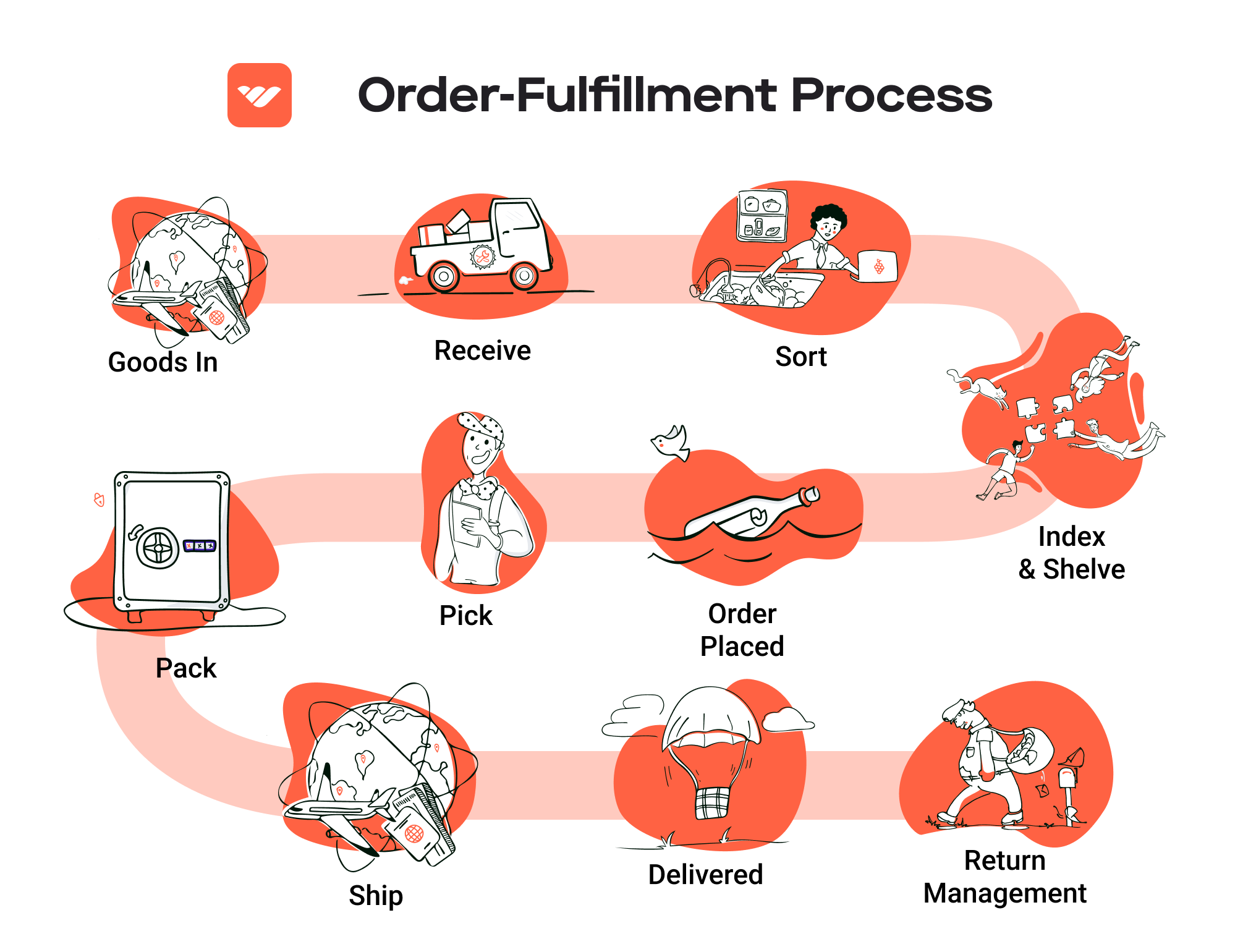
The primary advantage of dropshipping is the low barrier to entry. Businesses can launch quickly and test various products without incurring significant costs. Additionally, since the supplier handles inventory management and shipping, entrepreneurs can focus on marketing and customer acquisition. However, dropshipping has notable disadvantages, including lower profit margins due to the costs associated with relying on suppliers. Businesses are also at the mercy of their suppliers regarding product availability, shipping times, and quality control, which can lead to customer dissatisfaction if not managed properly. Furthermore, the competitive landscape in dropshipping can make it difficult to differentiate offerings, resulting in a saturated market. As such, while dropshipping offers flexibility and low risk, it also requires careful supplier management and strategic marketing to succeed.
Conclusion
Choosing the right fulfillment model is crucial for e-commerce businesses aiming to scale effectively. Each model—In-house fulfillment, Third-party logistics, and Dropshipping—has its own set of advantages and disadvantages, making it essential for business owners to assess their specific needs, resources, and long-term goals. By understanding these models, entrepreneurs can make informed decisions that align with their operational strategies and customer expectations.
A Deep Dive into Amazon FBA: Pros, Cons, and Who It’s For
Understanding Fulfillment by Amazon (FBA)
Fulfillment by Amazon (FBA) is a service that allows e-commerce sellers to store their products in Amazon’s fulfillment centers. Amazon takes care of storage, packaging, shipping, and customer service on behalf of the sellers. This means that when a customer orders a product, Amazon handles the entire fulfillment process, allowing sellers to focus on growing their businesses.
When a seller enrolls in FBA, they send their products to Amazon’s warehouses. Once the products are stored, they become eligible for Amazon Prime, which can significantly increase visibility and sales. Additionally, Amazon manages all aspects of logistics, including returns and customer inquiries, making it an attractive option for sellers looking to scale their operations quickly.
How FBA Works
-
Setting Up FBA: Sellers create an Amazon seller account and enroll in the FBA program. They then prepare their products according to Amazon’s guidelines, which include labeling and packaging requirements.
-
Shipping Inventory: Sellers ship their inventory to Amazon’s fulfillment centers. Amazon provides guidance on where to send products and how to prepare them for storage.
-
Storage: Once the products arrive at the fulfillment center, they are stored until sold. Sellers can track their inventory levels through the Amazon Seller Central dashboard.
-
Order Processing: When a customer places an order, Amazon picks, packs, and ships the product on behalf of the seller. The seller benefits from Amazon’s extensive logistics network, which can lead to faster delivery times.
-
Customer Service and Returns: Amazon handles customer service inquiries and manages returns, making it easier for sellers to maintain customer satisfaction without having to directly manage these processes.
Pros of FBA
Prime Eligibility
One of the most significant advantages of using FBA is that products become eligible for Amazon Prime. This can lead to increased sales as Prime members often prefer to purchase items that qualify for free two-day shipping. The Prime badge also enhances product visibility and consumer trust.
Customer Trust
Amazon is a well-established platform with a strong reputation for reliability and customer service. By using FBA, sellers can leverage this trust, which can lead to higher conversion rates. Customers are often more likely to purchase from sellers using FBA due to the perceived reliability of the fulfillment process.
Multi-Channel Fulfillment
FBA isn’t limited to just Amazon sales. Sellers can use Amazon’s fulfillment services for orders from other channels such as their own websites or other e-commerce platforms. This multi-channel fulfillment capability allows sellers to streamline their logistics and inventory management across different sales channels.
Scalability
FBA allows sellers to scale their operations without the need to invest heavily in their own warehousing and logistics. As sales increase, sellers can simply send more inventory to Amazon’s fulfillment centers, allowing them to keep up with demand without being bogged down by operational complexities.
Cons of FBA
High Fees
One of the most significant downsides of FBA is the cost. Amazon charges fees for storage, fulfillment, and other services, which can cut into profit margins. Depending on the type of product and sales volume, these fees can add up quickly, making it essential for sellers to calculate their costs carefully.
Strict Inventory Rules
Amazon has stringent inventory management policies that sellers must adhere to. This includes limits on how much inventory can be stored in fulfillment centers. If sellers do not manage their inventory effectively, they may incur additional fees or find their products stranded in Amazon’s warehouses.
Commingling Risks
FBA operates on a commingling model, which means that products from different sellers may be stored together. While this can lead to faster shipping times, it also carries risks. For example, if a customer receives a damaged or counterfeit item, it can lead to negative reviews that affect the original seller’s reputation, even if they were not at fault.
Limited Control Over Fulfillment
While FBA simplifies logistics, it also means that sellers relinquish a degree of control over the fulfillment process. This can be challenging for sellers who want to manage their packaging, branding, or customer service directly. Issues such as packaging errors or shipping delays can occur, and sellers may have limited recourse.
Who is FBA Best For?
Fulfillment by Amazon is particularly well-suited for:
-
Small to Medium-Sized Businesses: Sellers looking to scale operations without investing heavily in logistics infrastructure can benefit significantly from FBA’s services.
-
Sellers with High Volume: If a seller has a high sales volume or seasonal spikes in demand, FBA can help manage fulfillment efficiently, allowing them to focus on marketing and sales.
-
New Entrants to E-commerce: For new sellers, FBA provides an opportunity to enter the market with reduced logistical burdens. This allows them to concentrate on product development and customer acquisition.
-
Brands Seeking Trust: Sellers looking to leverage Amazon’s reputation and customer base can significantly benefit from the trust associated with FBA, especially for products that are competitive in the marketplace.
In conclusion, Fulfillment by Amazon offers a robust solution for e-commerce sellers looking to streamline their logistics and enhance their customer service capabilities. While there are notable costs and challenges associated with FBA, the benefits of increased visibility, customer trust, and operational efficiency make it a compelling choice for many businesses.
Core Services Offered by Fulfillment Centers
Inventory Management & Warehousing
Inventory management and warehousing are foundational services provided by fulfillment centers that directly impact an e-commerce business’s efficiency and customer satisfaction. Fulfillment centers offer dedicated spaces to store products, which allows businesses to maintain optimal stock levels without the overhead costs associated with owning and managing a warehouse.
What It Is: Fulfillment centers utilize advanced Warehouse Management Systems (WMS) to track inventory levels, orders, and shipments in real-time. These systems provide data analytics that help businesses forecast demand, manage stock levels, and minimize excess inventory.
Benefits:
– Cost Efficiency: By outsourcing warehousing, businesses can significantly reduce fixed costs associated with real estate, utilities, and labor.
– Scalability: Fulfillment centers provide the flexibility to scale operations as business needs change, accommodating seasonal spikes in demand without the need for long-term commitments.
– Improved Accuracy: With sophisticated inventory management systems, fulfillment centers minimize errors in stock counts and order processing, leading to higher customer satisfaction.
Pick and Pack Services
Pick and pack services are critical processes that ensure products are accurately selected and packaged for shipment to customers. This service is particularly essential for e-commerce businesses that require a streamlined order fulfillment process.
What It Is: In the pick and pack process, fulfillment center staff or automated systems retrieve products from inventory (picking) based on customer orders and then package them appropriately for shipping (packing). This may include selecting the right box size, adding protective materials, and ensuring the correct shipping labels are applied.
Benefits:
– Speed and Efficiency: Fulfillment centers are equipped with optimized workflows and technologies that speed up the picking and packing process, ensuring orders are dispatched quickly.
– Custom Packaging Options: Many fulfillment centers offer customizable packaging solutions that allow businesses to enhance brand visibility and customer experience.
– Error Reduction: With trained personnel and automated systems, the likelihood of errors in order fulfillment is significantly reduced, which enhances overall customer satisfaction.
Kitting and Assembly
Kitting and assembly services are essential for e-commerce businesses that sell products requiring bundling or assembly before they are shipped to customers. This service streamlines the process of preparing products for sale.
What It Is: Kitting involves assembling multiple products into a single package or kit. This could include combining complementary items or preparing products that require assembly before shipping. For instance, a fulfillment center might bundle a bicycle with necessary tools and accessories into one package.
Benefits:
– Enhanced Customer Value: Offering kits can increase perceived value for customers and can lead to higher average order values.
– Simplified Logistics: By having fulfillment centers handle the kitting process, businesses can simplify their supply chain and reduce the complexity of managing individual SKUs.
– Time Savings: Outsourcing kitting and assembly allows businesses to focus on core activities such as marketing and product development rather than logistics.
Returns Management (Reverse Logistics)
Returns management, often referred to as reverse logistics, is a critical service offered by fulfillment centers that can significantly impact customer satisfaction and retention. As e-commerce continues to grow, efficient handling of returns has become increasingly important.
What It Is: Returns management involves the process of handling returned products, including receiving, inspecting, restocking, and managing exchanges or refunds. Fulfillment centers have established processes to manage returns efficiently, often integrating this with their existing inventory management systems.
Benefits:
– Customer Satisfaction: A streamlined returns process enhances customer trust and satisfaction, encouraging repeat purchases and positive reviews.
– Cost Control: Efficient returns management can help businesses minimize losses associated with returned goods by quickly restocking items or processing them for resale.
– Data Insights: By analyzing return reasons and patterns, businesses can gain valuable insights into product performance and customer preferences, informing future product development and inventory decisions.
In conclusion, leveraging the core services offered by fulfillment centers—inventory management, pick and pack, kitting and assembly, and returns management—can significantly enhance an e-commerce business’s operational efficiency, customer satisfaction, and scalability. As businesses continue to grow, partnering with an effective fulfillment center can provide a competitive edge in the fast-paced e-commerce landscape.
How to Choose a Fulfillment Partner: A 6-Point Checklist
Location & Warehouse Network
Importance: The geographical location of your fulfillment partner’s warehouses can significantly impact shipping times and costs. A partner with strategically located warehouses can help you reach your customers faster and reduce shipping expenses, especially for e-commerce sellers targeting a specific region or demographic.
Questions to Ask:
1. Where are your warehouses located, and how do these locations align with my target market?
2. Do you offer multiple warehouse options to optimize shipping routes?
3. How do you handle inventory distribution among your warehouses to ensure stock availability?
Technology & Integrations
Importance: In today’s digital landscape, technology plays a crucial role in efficient order processing and inventory management. A fulfillment partner that offers robust technology solutions can streamline operations, reduce errors, and provide real-time insights into inventory levels and order statuses.
Questions to Ask:
1. What fulfillment management system (FMS) do you use, and how does it integrate with my existing e-commerce platform (e.g., Shopify, WooCommerce, TEMU)?
2. Do you provide real-time tracking for orders, and how can my customers access this information?
3. What data analytics and reporting capabilities do you offer to help me optimize my inventory and sales strategies?
Specializations (e.g., Cold Storage, Oversized Items)
Importance: Depending on the nature of your products, you may need a fulfillment partner with specific capabilities. If you sell perishable goods, electronics, or oversized items, ensure your partner has the necessary facilities and expertise to handle such products.
Questions to Ask:
1. What specializations do you offer in terms of product handling (e.g., cold storage, fragile items)?
2. How do you ensure compliance with safety and quality standards for specialized products?
3. Can you accommodate seasonal fluctuations in inventory, especially for niche products?
Scalability & Capacity
Importance: As your business grows, your fulfillment needs will evolve. It’s vital to choose a partner that can scale with you, whether through increased capacity, additional services, or geographic expansion. A partner that can adapt to your growth will save you the hassle of switching providers later on.
Questions to Ask:
1. How do you handle peak seasons or sudden surges in order volume?
2. What is your capacity for scaling operations, and how quickly can you accommodate my growth?
3. Are there any limitations on the types of products or quantities you can handle?
Pricing and Contracts
Importance: Understanding the pricing structure and contract terms is essential for managing your budget and ensuring that your fulfillment partner aligns with your financial goals. Transparent pricing helps avoid unexpected costs that can affect your margins.
Questions to Ask:
1. What is your pricing model (e.g., per order, per item, monthly fees), and what factors influence these costs?
2. Are there any hidden fees for services such as storage, packaging, or returns?
3. What are the contract terms regarding termination, service changes, and price adjustments?
Customer Support & Reviews
Importance: Reliable customer support is crucial for addressing issues that may arise during the fulfillment process. Additionally, researching reviews and testimonials can provide insights into the partner’s reliability and service quality.
Questions to Ask:
1. What support channels do you offer (e.g., phone, email, chat), and what are your response times?
2. Can you provide references or case studies from other businesses similar to mine?
3. How do you handle complaints or issues related to fulfillment, and what is your process for resolving them?
Conclusion
Choosing the right fulfillment partner is a critical decision that can significantly impact your e-commerce business’s success. By following this checklist and asking the right questions, you can identify a partner that aligns with your operational needs, supports your growth, and helps you deliver an exceptional customer experience. Take the time to evaluate potential partners thoroughly, as this investment in logistics will pay dividends in efficiency and customer satisfaction as you scale your business.
Understanding Fulfillment Pricing: A Breakdown of Common Fees
Initial Setup Fees
Initial setup fees are one-time charges incurred when you first partner with a fulfillment provider. These fees cover the costs associated with establishing your account, integrating your e-commerce platform with the fulfillment system, and configuring any necessary software settings.
The calculation of initial setup fees can vary significantly among providers. Some may charge a flat fee, while others might base it on the complexity of your integration or the number of products you plan to sell. It’s essential to clarify what services are included in this fee—such as training on their system or initial inventory setup—to avoid unexpected costs later.
Receiving Fees
Receiving fees are charged when your inventory arrives at the fulfillment center. These fees cover the labor and resources involved in unloading, inspecting, and entering your products into the warehouse management system (WMS).
Typically, receiving fees are calculated per pallet or per hour of labor required to process the incoming inventory. Some fulfillment centers may have a tiered pricing structure based on the volume of inventory received; larger shipments might incur a lower per-unit fee. Understanding this fee is crucial, especially if you plan to ship in bulk, as it can significantly affect your initial operational costs.
Storage Fees (per pallet/bin)
Storage fees are ongoing charges for keeping your products in the fulfillment center. These fees are typically calculated based on the space your inventory occupies, often measured per pallet or bin.
Storage fees can vary based on several factors, including:
- Location of the Fulfillment Center: Warehouses in urban areas may charge more due to higher real estate costs.
- Seasonal Demand: Rates can fluctuate based on demand during peak seasons, such as holidays.
- Duration of Storage: Some providers may implement a tiered structure where long-term storage incurs additional fees after a specified period (e.g., 30 days).
To manage storage costs effectively, regularly assess your inventory turnover rate and adjust your stock levels accordingly.
Pick & Pack Fees (per item/order)
Pick and pack fees are charged for the labor involved in selecting products from the warehouse and preparing them for shipment. This fee is typically calculated on a per-item or per-order basis, with costs varying depending on the complexity of the order.
Factors influencing pick and pack fees include:
- Order Size: Larger orders may incur higher fees due to the increased labor involved.
- Product Complexity: Items requiring special handling or unique packing materials may attract additional charges.
- Customization Needs: If you require branded packing slips or gift wrapping, these services may add to your costs.
Understanding your average order size and complexity can help you estimate pick and pack fees accurately and negotiate better terms with your fulfillment partner.
Shipping Fees
Shipping fees encompass the costs associated with transporting your products from the fulfillment center to your customers. These fees can vary widely based on several factors:
- Shipping Method: Options may include standard, expedited, or same-day delivery, with costs increasing for faster services.
- Destination: Shipping costs are generally higher for international orders compared to domestic ones, influenced by distance and customs fees.
- Package Size and Weight: Heavier or larger packages typically incur higher shipping costs, so optimizing packaging can lead to savings.
Many fulfillment providers offer discounted shipping rates through partnerships with major carriers, which can significantly reduce your overall shipping expenses. Understanding the various shipping options and their associated costs is crucial for maintaining competitive pricing.
Conclusion: Tips for Accurate Quotes
To obtain an accurate quote from fulfillment providers, consider the following tips:
- Provide Detailed Information: Share specifics about your inventory, including dimensions, weights, and expected order volumes.
- Clarify Services Needed: Specify whether you need full fulfillment, partial fulfillment, or additional services like returns management.
- Request a Breakdown of Costs: Ensure the quote includes all potential fees, including hidden charges that may arise.
- Compare Multiple Providers: Gather quotes from several fulfillment partners to understand the market rate and identify the best fit for your business needs.
- Inquire About Discounts: Ask about volume discounts or bundled services that could lower your overall costs.
By understanding these common fulfillment fees and how they are calculated, you can make informed decisions that enhance your e-commerce operations and support your business growth.
Frequently Asked Questions (FAQs) about Fulfillment
1. What is Fulfillment by TEMU?
Fulfillment by TEMU refers to the service provided by the TEMU platform that allows sellers to manage their order processing, inventory, and shipping logistics. Sellers can choose between full fulfillment, where TEMU handles all aspects of order fulfillment, or partial fulfillment, where sellers retain some control over their inventory and logistics while TEMU assists with specific tasks.
2. What are the advantages of using TEMU’s Fulfillment services?
Using TEMU’s fulfillment services allows sellers to leverage TEMU’s established logistics infrastructure, which can lead to streamlined operations, reduced shipping times, and improved customer satisfaction. Sellers benefit from reduced operational burdens, as they do not need to manage warehousing, inventory management, or shipping directly.
3. How does TEMU handle shipping and delivery?
TEMU partners with various logistics providers to ensure timely shipping and delivery of products. Sellers can select from multiple shipping options based on their needs, and TEMU’s fulfillment services help minimize shipping delays by optimizing logistics and managing customs compliance.
4. What is the difference between a warehouse and a fulfillment center?
A warehouse is primarily a storage facility where goods are kept until they are needed. In contrast, a fulfillment center is a specialized type of warehouse that focuses on processing and shipping orders. Fulfillment centers are equipped to handle tasks such as picking, packing, and shipping products directly to customers, making them crucial for e-commerce operations.
5. What is a 3PL (Third-Party Logistics)?
A Third-Party Logistics (3PL) provider is a company that offers outsourced logistics services, including warehousing, transportation, and order fulfillment. By partnering with a 3PL, businesses can leverage their expertise, infrastructure, and technology to streamline logistics operations, reduce costs, and improve delivery times.
6. How much do fulfillment services cost?
The cost of fulfillment services can vary widely depending on factors such as the volume of orders, the type of products, storage fees, and shipping costs. TEMU typically offers competitive pricing structures, which can include per-order fees, monthly storage fees, and shipping costs. It’s advisable for sellers to request quotes based on their specific needs to understand the overall costs involved.
7. What challenges do sellers face with TEMU fulfillment?
Sellers may encounter challenges such as inventory management, shipping delays, customs compliance issues, and customer service demands. Effective fulfillment strategies are essential to mitigate these challenges and ensure a positive customer experience.
8. Can I handle fulfillment myself while selling on TEMU?
Yes, sellers have the option to fulfill orders themselves, especially if they have local warehouses and staff. This approach allows for greater control over inventory and shipping processes. However, it can also be operationally demanding and may require significant resources, particularly for smaller businesses.
9. How does TEMU ensure compliance with customs regulations?
TEMU works with logistics experts to navigate complex customs regulations and paperwork. This ensures that shipments comply with destination country requirements, reducing the risk of delays and ensuring smoother cross-border trade for sellers.
10. What should I consider when choosing between full and partial fulfillment?
When deciding between full and partial fulfillment, consider factors such as your business size, available resources, and level of control you want over your logistics. Full fulfillment is ideal for sellers looking to minimize operational burdens, while partial fulfillment may suit those who wish to manage certain aspects of logistics to optimize costs and maintain direct oversight.
Conclusion: Is Outsourcing Fulfillment the Right Move for Your Business?
The Case for Outsourcing Fulfillment
Outsourcing fulfillment can be a transformative decision for e-commerce businesses looking to scale efficiently. By partnering with a fulfillment service, you can save valuable time that can be redirected towards strategic growth initiatives. Handling logistics in-house often consumes resources that could be better utilized in marketing, product development, or customer engagement. With a dedicated fulfillment partner, you can streamline operations and reduce the burden of day-to-day logistics management.
Moreover, scalability is a significant advantage of outsourcing fulfillment. As your business grows, so do the complexities of managing inventory, shipping, and customer service. Fulfillment services typically offer flexible solutions that can easily adapt to your changing needs—whether you experience seasonal spikes in demand or plan to expand your product range. This adaptability ensures that you can meet customer expectations without compromising service quality or incurring excessive costs.
Additionally, expertise in logistics is a critical component of a successful fulfillment strategy. Fulfillment providers bring industry knowledge, advanced technology, and established networks to the table, allowing you to navigate challenges like customs regulations, shipping delays, and inventory management more effectively. This expertise can enhance your operational efficiency and improve customer satisfaction, which is crucial in today’s competitive landscape.
However, the success of outsourcing fulfillment hinges on selecting the right partner. It’s vital to evaluate potential providers based on their capabilities, reliability, and how well they align with your business goals.
To determine if outsourcing fulfillment is the right move for your business, consider conducting an audit of your current shipping process. Analyze your operational challenges, costs, and customer feedback. This assessment can guide you in deciding whether a fulfillment partner could enhance your business efficiency and support your growth ambitions.
Important Disclaimer
⚠️ Important Disclaimer
The information in this guide is for educational purposes. Fulfillment services, pricing, and platform features change frequently. Always conduct your own due diligence and consult with providers directly before making business decisions.
